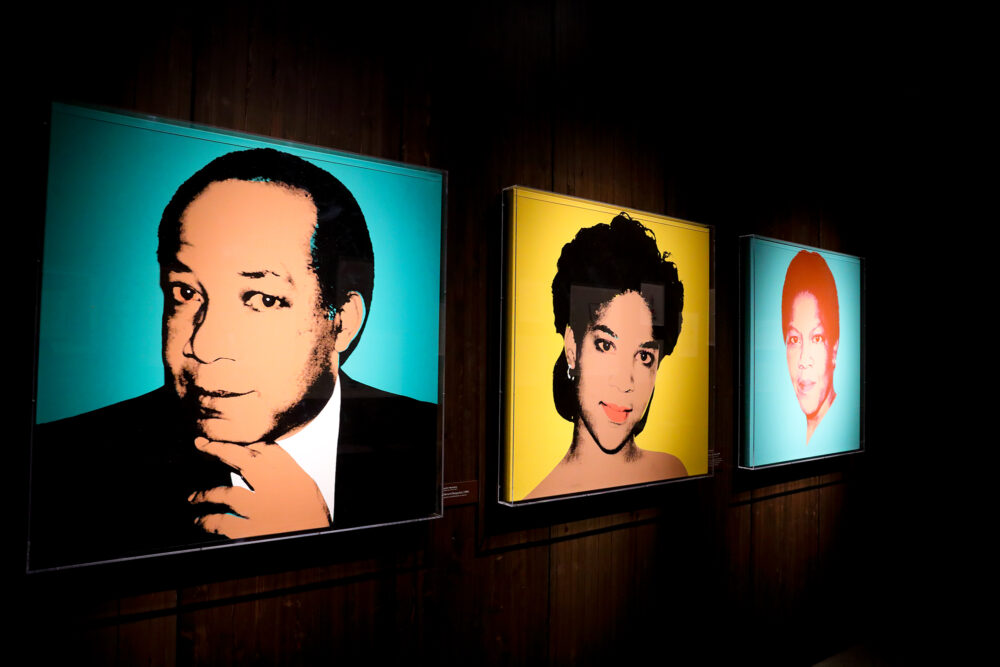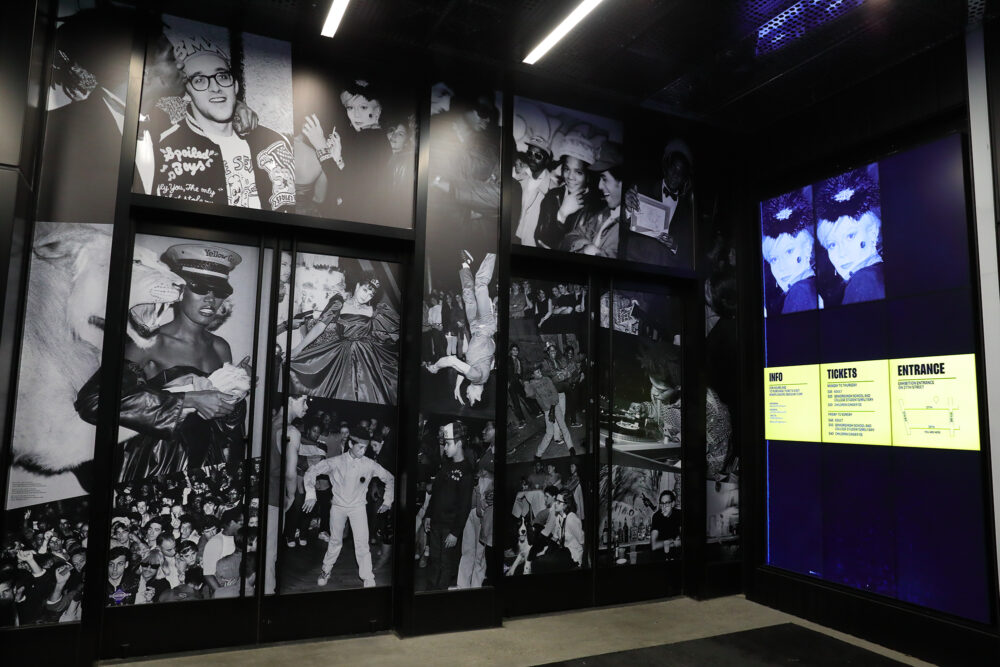Browsing digital images of art is an efficient way to learn, but pixels are much less stimulating than brush strokes viewed from inches away. The stark contrast between the two is striking when viewing the work of Jean-Michel Basquiat, whose layered use of texture adds another visual impact entirely. His paintings are sensory and subtle in ways that can’t be witnessed online, so we were thrilled to preview his family’s new exhibition that just opened in NYC. The first of its kind, with over 200 never-before-seen pieces, personal effects, and other ephemera, this well-planned experience provides a whole new snapshot of how the legend lived. King Pleasure, which just opened on Saturday, has transformed over 15,000 square feet at the Starrett-Lehigh Building in Chelsea into a multifaceted gallery of rarities. The ticketed show is adjacent to a new store that is open to the public, called the King Pleasure Emporium, where apparel, athletic wear, leather goods, stationary, pet accessories, housewares, and more are decorated in Basquiat’s unmistakable handwriting-laden style. Because his two younger sisters, Lisane Basquiat and Jeanine Heriveaux, and his stepmother, Nora Fitzpatrick, are the visionaries behind King Pleasure, bits of his personality are revealed via numerous sweet details.
Taking in a mostly-unseen Basquiat collection in a bare white gallery would already be a memorable treat, but this immersive atmosphere makes it extra special. Divided into seven distinct sections, his paintings are so meaningfully arranged that recurring themes stand out with increased clarity – like a display of three self-portraits spanning decades, each one focused on his minimalistic silhouette. In addition to the many pieces he painted in Charlie Parker’s memory, the Brooklyn-born artist’s passion for jazz, soul, and disco is woven into your walk. You can scan codes to “Listen Like Basquiat” via corresponding Spotify playlists, Childhood, Studio Life, and Nightlife. There’s even a mix of musicians his work inspired, entitled Legacy, which ranges from Fugees to Jay-Z to Sonic Youth to Killer Mike. This ensures the wealth of relevant music isn’t muddied between rooms as you roam, and you get some fun supplementary material for later too. The nonlinear layout by architect Sir David Adjaye (who designed The Smithsonian National Museum of African American History & Culture in Washington, D.C.) allows you to wander at your own pace and feel a sense of discovery. Yet it’s structured enough that there are clear wow moments too, like when you first turn a corner to find one of Basquiat’s stylish red-yellow-blue skulls peering back from a sumptuous dark canvas. His deceptively-simple iconography – be it Gumby, Ajax cleaner, or a ten-dollar bill with a pig in Hamilton’s place – is a timeless wink at the U.S. cultural landscape. His brilliant makeshift canvases range from an old refrigerator door to a tufted blanket to wood slat fencing salvaged from behind the studio he rented in Venice Beach, California.
While the vibrant spaces his estate recreated are understandably blocked off (it’s not an Ikea showroom, after all), they still feel more like transplanted rooms than exhibits. The orange-red floral kitchen wallpaper and groovy living room of his childhood – with Chicago’s “Saturday in the Park” turned up – not only provide a warm welcome, but helps explain his penchant for bright colors and nostalgic themes. Perhaps the most stirring part of King Pleasure, Basquiat’s Great Jones Street studio is arranged in a perfect state of artistic disarray. His blue shirt with the gold and silver stitching is draped near his sketches and in-progress paintings. His furniture, décor, videotapes, and books are spread out cozily alongside The Breakfast Club on TV. Later, televisions return in the plush reproduction of The Palladium, the East Village nightclub that embodied the glamorous party culture of the era. A wall of fast-changing screens shows photos of Basquiat hanging with Andy Warhol, Keith Haring, Grace Jones, and other familiar faces. Two massive, spellbinding pieces that Basquiat created for the Michael Todd VIP Room, Nu-Nile and Untitled, make you realize why that vast studio space was such a game-changer for his artistic freedom. Basquiat’s bold appetite for blank space is balanced with his more elaborate and overflowing ideas, making King Pleasure a dazzling stroll through his complex thought process. Most of the exhibition is not even under glass, and it’s awe-inspiring to be within reach of his confident brushwork and witty prose.
With Warhol’s Monroe-style portraits of Basquiat and his family also on display, this historic unveiling couldn’t be better timed to pull in both old and new Jean-Michel Basquiat fans. King Pleasure opens during a craze that the NYT refers to as “Warhol-mania,” and Basquiat’s role in that story is inextricable. Anthony McCarten’s new play in London, The Collaboration, which centers on Warhol and Basquiat’s friendship, is being adapted to film. Netflix’s water-cooler-popular new docuseries, The Andy Warhol Diaries, covers the Basquiat and Warhol collaborations extensively. Even more timely are the messages both hidden and in plain sight. With the help of his family’s thoughtful placards, items like his bicycle (just sitting out in the open) reveal the underlying story about racial inequity that is so often reflected in his art. That bike, for example, was his main form of transportation because he had trouble catching cabs. Given the unjustness Basquiat had to overcome on a daily basis, even while becoming art royalty, the crown emblem he frequently painted shines with deep meaning. Discussing Basquiat’s ubiquitous crown, his sisters explained, “He wanted to make sure the world knew he was recognizing the Black kings and queens who defined his world history. And it also signals to us that he himself knew he was a king – sharing a powerful lesson and enduring exhortation for people of color.”
Article: Olivia Isenhart

























